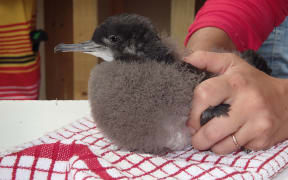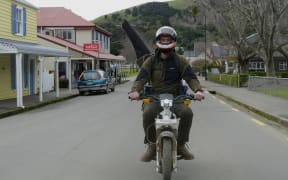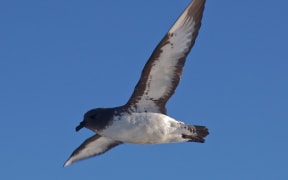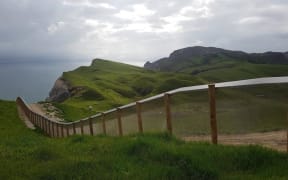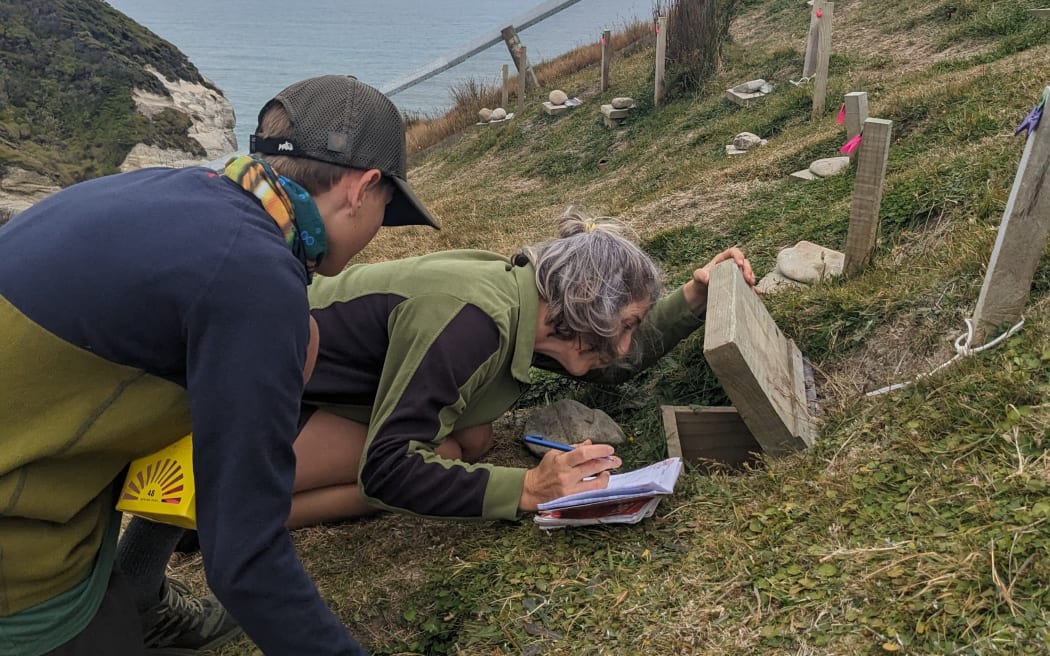
Volunteers at the Wharariki Ecosanctuary check the fluttering shearwater burrows at Cape Farewell. Photo: RNZ / Supplied
A large group of pakahā, or fluttering shearwater, chicks have mostly fledged from their burrows at a sanctuary at the northern tip of the South Island.
In mid-January, 92 chicks were transferred to the Wharariki Ecosanctuary - which was set up by HealthPost Nature Trust in 2020 in conjunction with the Department of Conservation and Manawhenua ki Mohua.
It is the third chick translocation in three years from Kokomohua-Long Island in the Marlborough Sounds to Cape Farewell - the northernmost point of the South Island.
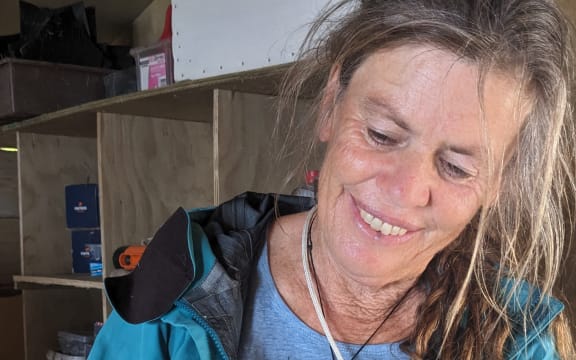
Project co-ordinator Marian Milne holds a fluttering shearwater chick. Photo: RNZ / Supplied
Project co-ordinator Marian Milne said the birds were each named by a team of around 35 volunteers, who had spent the last month hand-feeding them smoothies made from frozen pilchards and canned sardines until they were ready to fledge.
All but one of the birds had successfully taken flight from the cape. The last remaining chick, Eric, had an eye infection and was in quarantine until it healed, she said.
A vet team was caring for him, and testing him to find the cause of the infection.
The birds were fed and weighed each day, and their wings measured every second day. The amount of down on each chick was also assessed.
"Wing measurements not only show steady growth but are our best indicator of the birds age, and indicate when to allow birds to roam out of their burrows so that they can practise flying."
Once the birds fledge, they spend up to three years at sea, before returning to breed on the cliffs of Cape Farewell.
The Trust expects to see the first set of birds - which were moved to the cape three years ago - to return this year, and for breeding to begin next year.
HealthPost Nature Trust chair Peter Butler said the sanctuary was protected by a predator-proof fence and the translocations were intended to rebuild an abundant colony of seabirds.
"We have the chance to protect and enhance this ecosystem with our work to fence out the new kids on the block such as the mustelids, possums and farm animals; to plant up with native vegetation and then to reintroduce some of the bird species lost to the area."
He said when they returned, it would be the first fluttering shearwater colony back on mainland New Zealand since predators wiped them out.

